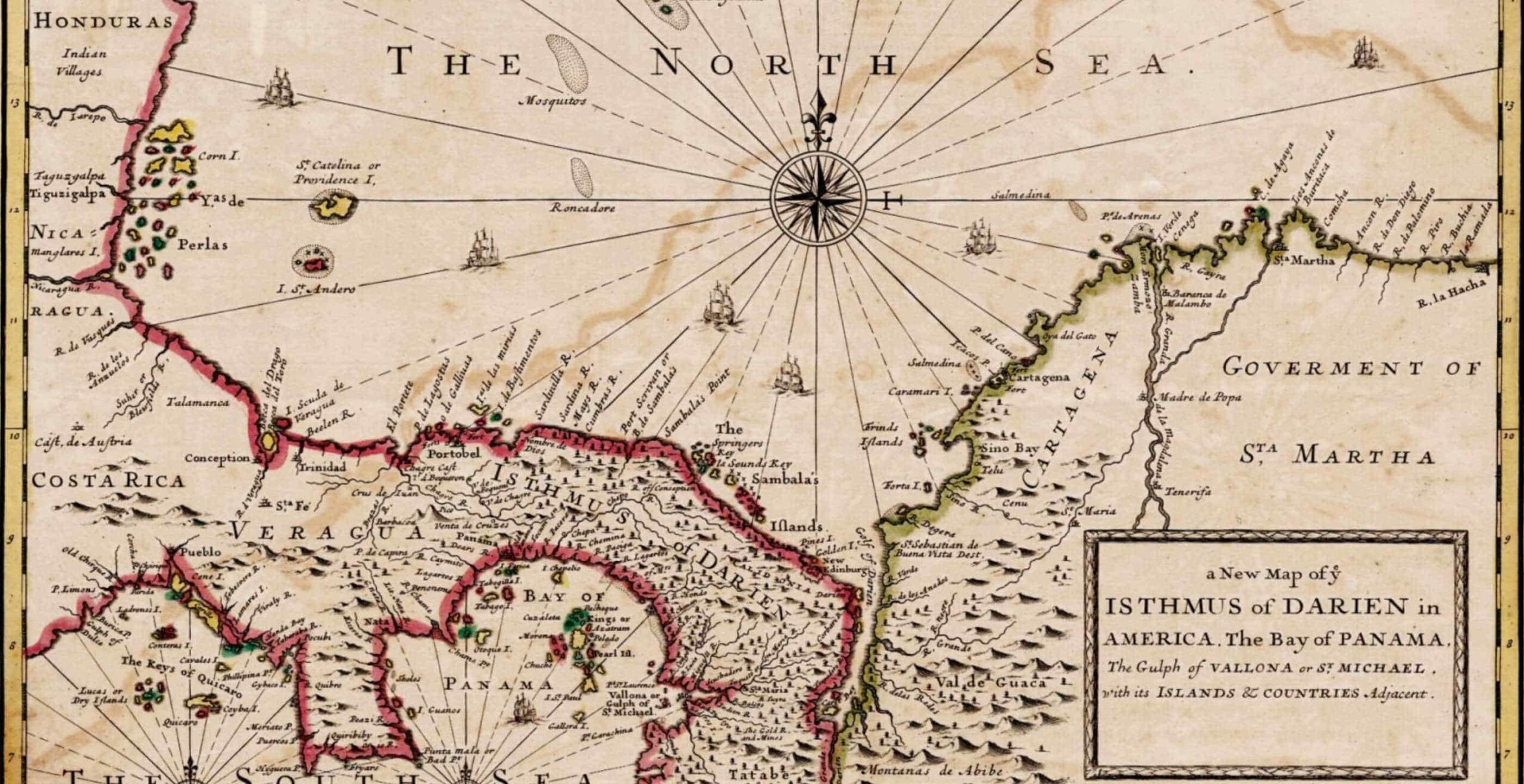A Scottish fleet of five ships put ashore on the Darién Gap, on the Isthmus of Panama, with 1,200 people. Bent on establishing a Scottish colony, New Caledonia, in the impenetrable rainforest, the settlers christened their capital New Edinburgh.
In the seventeenth century, Scotland’s economy was small, its exports were limited, and the nation was in a weak position compared to neighbouring England. Scottish shipbuilding was in decline and the Navigation Acts restricted Scotland’s shipping. To make matters worse, the 1690s were the coldest decade in over 750 years, resulting in the loss of 10–15% of Scotland’s population, then estimated at around 1 million. Political instability, crop failures, and religious and economic unrest led some Scots to call for union with England.
However, a Scottish majority believed the country should become a great colonial power like England, which by the late 1600s had established colonial holdings in the Americans, the Caribbean, Africa and Asia. In 1695, the Bank of Scotland was founded, and the Company of Scotland was created using capital raised through public subscription, aiming to enable Scotland to trade with Africa and the Indies. The English were unsupportive of this venture, as it threatened the London East India Company’s monopoly, so the Company of Scotland sought subscriptions in Amsterdam. King William III of England (who also reigned as William II of Scotland) was displeased that Scotland had reached out to the Dutch, as England was at war with France. The king was also concerned about angering Spain, which had claimed the Darién territory as part of New Granada.
The omens for the new colony were therefore not especially promising. Sure enough, due to poor planning, tropical diseases, a lack of trade with indigenous tribes, the uncooperative Dutch and English colonies, and the military response from the Spanish Empire, the Darién Project ended in disaster. More than 80% of the colonists died within a year, and the settlement was abandoned. News of their fate did not reach Scotland before a second voyage of 1,000 people set off for New Caledonia, arriving on 30 November 1699.
The Company of Scotland had invested approximately 20% of all circulating Scottish currency in the Darién Project, resulting in a financial loss of £500,000, which left the Scottish economy nearly bankrupt. The financial catastrophe pushed many among Scotland’s elite to advocate for union with England, which was accomplished a few years later with the 1707 Acts of Union. After joining the union, Scotland’s national debt was wiped out, and the Scottish currency was given a fixed value relative to the English pound.
More than 400 years later, its harsh terrain and thick vegetation make Darién Gap one of the most impenetrable and undeveloped parts of the world. The former site of the Darién colony is located in the modern territory of Guna Yala, Panama, where the indigenous Guna people reside. Approximately 95% of the 32,000 inhabitants are indigenous. Allegedly, a Scottish cemetery lies hidden under the jungle, but it has long since been lost and forgotten.

